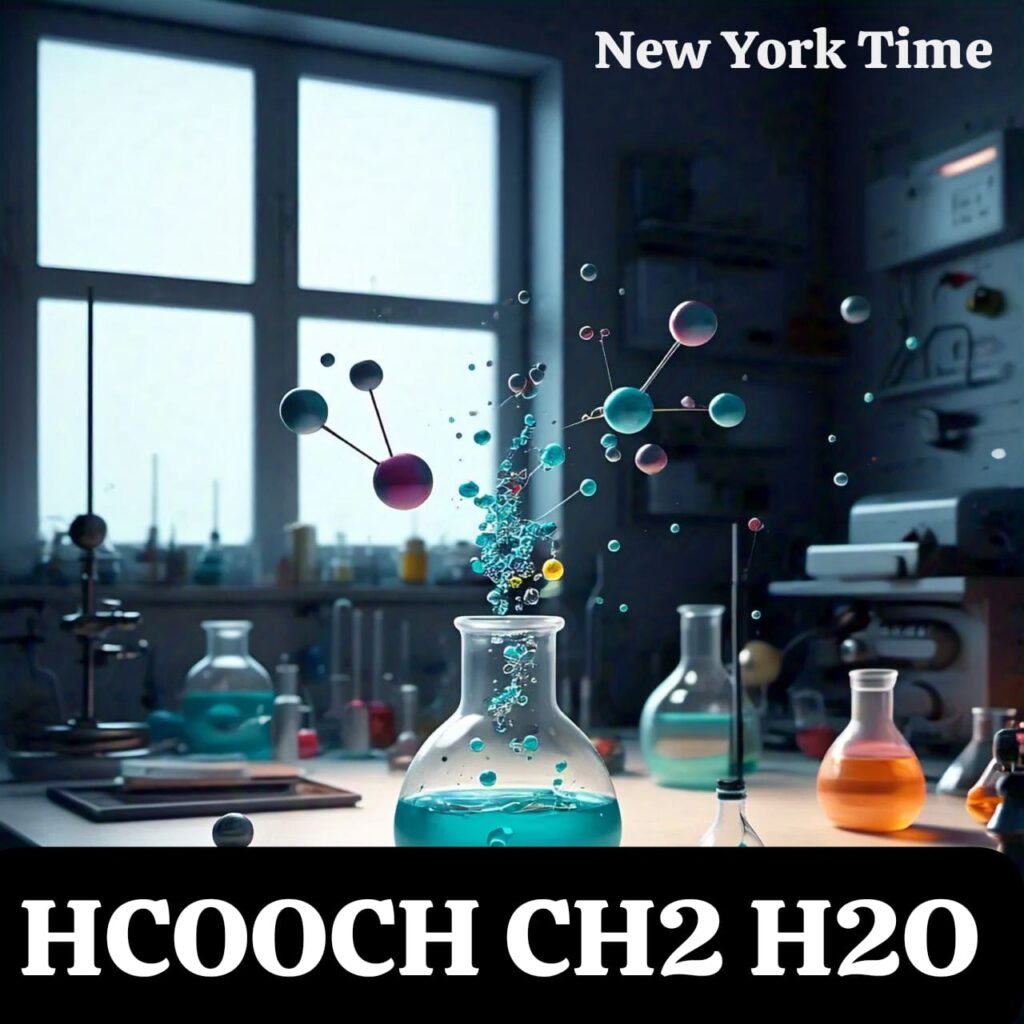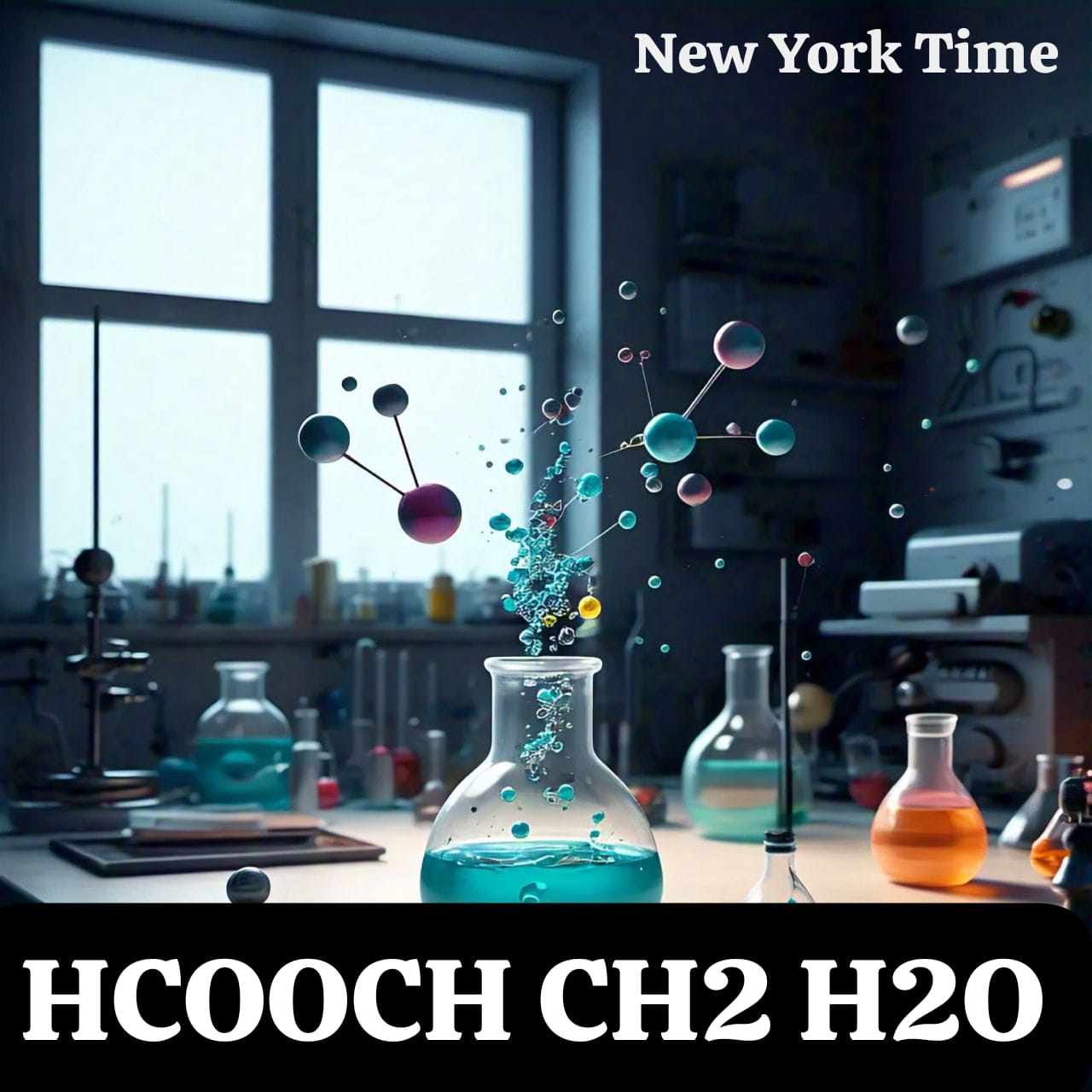In the world of chemistry, even the most complex-sounding compounds can have practical uses and fascinating applications. One such compound is HCOOCH CH2 H2O, which might initially appear complicated but has significant industrial, pharmaceutical, and everyday relevance. This article will break down this chemical formula, explain its formation, explore its uses, and discuss its environmental impact and other essential factors, all in an easy-to-understand manner.
What is HCOOCH CH2 H2O?
HCOOCH CH2 H2O is a chemical compound made up of three components: formic acid (HCOOH), methyl alcohol (CH3OH), and water (H2O). The interaction between these elements forms an ester, which is a compound commonly used in various industrial and chemical processes. Esters, such as HCOOCH CH2 H2O, are created through a reaction between an acid and an alcohol, and the result is a versatile compound with many practical applications.
The chemical formula breaks down as follows:
HCOOH: Formic acid, a simple organic acid commonly found in nature, like in ant venom.
CH3OH: Methyl alcohol, also known as methanol, a widely used solvent.
H2O: Water, a universal solvent and essential element in chemical reactions.
When combined, these components undergo a chemical reaction that produces an ester, a type of compound known for its unique properties.

How is HCOOCH CH2 H2O Formed?
The formation of HCOOCH CH2 H2O occurs through a process known as esterification. Here’s how it works:
Acid and Alcohol Interaction
The esterification reaction begins when formic acid (HCOOH) reacts with methyl alcohol (CH3OH). This reaction typically occurs in the presence of a catalyst, which speeds up the process.
Catalyst Role
In most cases, sulfuric acid is used as a catalyst in the esterification process. The catalyst promotes then reaction without being consumed, allowing the compound to form more efficiently.
Water Release
As the esterification reaction proceeds, water (H2O) is either produced as a by-product or is added to stabilize the resulting compound. The ester (HCOOCH CH2 H2O) forms through this reaction, making the process an essential part of industrial and laboratory synthesis.
This method of ester formation is morewidely used in chemistry labs and manufacturing settings to create esters with various properties and applications.
Uses of HCOOCH CH2 H2O
HCOOCH CH2 H2O, as an ester, is highly versatile and is used in various fields. Let’s explore some of the key applications of this compound.
Industrial Solvents
Esters like HCOOCH CH2 H2O are commonly used as solvents in industrial applications. They are effective in dissolving or cleaning certain materials, which makes them valuable in processes that require purification or separation of substances.
Pharmaceuticals
In the pharmaceutical industry, derivatives of this compound are used as intermediates in the synthesis of active pharmaceutical ingredients (APIs). These intermediates play an essential role in the creation of various medicines, making HCOOCH CH2 H2O significant in medical production.
Food Industry
Interestingly, esters derived from this compound are used as food additives in the food industry. They act as flavor enhancers and preservatives, improving the taste and shelf life of food products. As a result, esters like HCOOCH CH2 H2O can be found in a variety of food items, contributing to their flavor profiles.
Laboratory Research
HCOOCH CH2 H2O plays an important role in laboratory research. It is often used in experiments studying esterification reactions and in the synthesis of new compounds. Researchers can modify this compound to create different derivatives, opening up possibilities for a range of new materials and applications.
Fragrances and Flavors
The esters derived from HCOOCH CH2 H2O are known for their pleasant, fruity aromas. As a result, they are often used in the fragrance industry, where they are incorporated into perfumes, air fresheners, and other scented products. The compound’s unique scent makes it highly desirable in the creation of fragrances and flavors.

Environmental Impact of HCOOCH CH2 H2O
Although HCOOCH CH2 H2O is relatively stable, it is important to handle it carefully due to potential environmental risks.
Potential Harm to Aquatic Systems
Improper disposal of the compound’s derivatives can have a negative impact on the environment, particularly on aquatic ecosystems. If these compounds enter water sources, they can harm aquatic life by disrupting the balance of the ecosystem.
Eco-friendly Practices
Modern industry standards emphasize the importance of eco-friendly practices when producing and using compounds like HCOOCH CH2 H2O. This includes proper waste management and following guidelines for disposal, ensuring that environmental harm is minimized.
Benefits of Understanding HCOOCH CH2 H2O
Understanding HCOOCH CH2 H2O offers several key benefits:
Chemistry in Daily Life
This compound showcases how chemistry contributes to practical solutions in everyday life. From solvents and food additives to pharmaceuticals, the application of chemistry in compounds like HCOOCH CH2 H2O plays a role in the products we use daily.
Informed Decisions
By understanding its applications and properties, consumers can make more informed choices about the products they use. Whether it’s pharmaceuticals, food, or fragrances, knowledge of the chemicals in these products can help individuals make better purchasing decisions.
Scientific Ingenuity
This compound highlights the ingenuity of combining basic elements—formic acid, methyl alcohol, and water—to create something valuable. The ability to synthesize new compounds and materials from simple substances is a testament to the power of chemistry.
Challenges in Working with HCOOCH CH2 H2O
While HCOOCH CH2 H2O has many practical applications, there are some challenges associated with working with it.
Sensitivity to Moisture
HCOOCH CH2 H2O can be sensitive to moisture, which can interfere with its chemical stability. Proper storage conditions are essential to maintain its integrity and prevent unwanted reactions.
Specialized Handling
This compound requires specialized handling to ensure it does not become contaminated or degraded. Specific storage conditions, such as temperature control, are necessary to preserve its properties.
Safety Measures
As with all chemicals, safety protocols must be followed when working with HCOOCH CH2 H2O. This includes wearing appropriate personal protective equipment (PPE) like gloves and goggles, ensuring proper ventilation, and following handling instructions to avoid potential risks.
How Does It Compare to Similar Compounds?
HCOOCH CH2 H2O is part of a larger family of compounds known as esters, which are created by the reaction between an acid and an alcohol. Compared to other esters, HCOOCH CH2 H2O is notable for its simplicity and versatility. It has a wide range of applications, from solvents to pharmaceuticals, making it more broadly useful than some other esters that may have more niche purposes.
Conclusion
HCOOCH CH2 H2O might seem like just another chemical formula, but it holds considerable importance in various industries and everyday applications. From industrial solvents and pharmaceuticals to food additives and fragrances, this compound demonstrates the practical side of chemistry. By understanding its formation, uses, and potential environmental impact, we gain a greater appreciation for the role science plays in enriching our daily lives.
FAQs
What is the main use of HCOOCH CH2 H2O?
Its main uses include serving as a solvent, pharmaceutical ingredient, and a base for creating esters in fragrances and food additives.
Is HCOOCH CH2 H2O safe to handle?
Yes, with proper precautions. Always wear gloves and goggles when handling chemicals, and ensure you’re in a well-ventilated area.
Can it harm the environment?
Improper disposal of its derivatives can harm ecosystems. It’s important to follow guidelines for safe handling and disposal.
How is it different from other esters?
Its simplicity and versatility make it unique. While other esters may have niche uses, this compound is widely applicable.
Are there natural sources for HCOOCH CH2 H2O?
Some of its components, like formic acid, can be found naturally (e.g., in ant venom). However, Then compound itself is typically synthesized.




